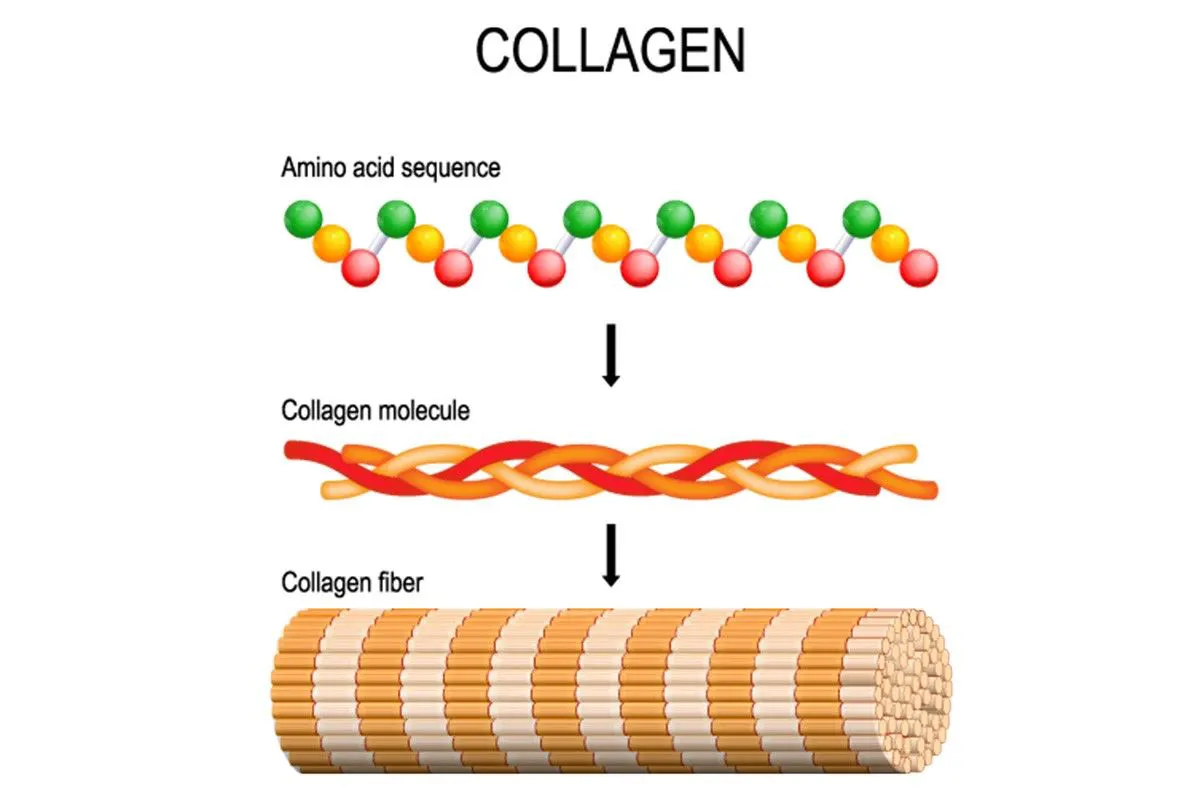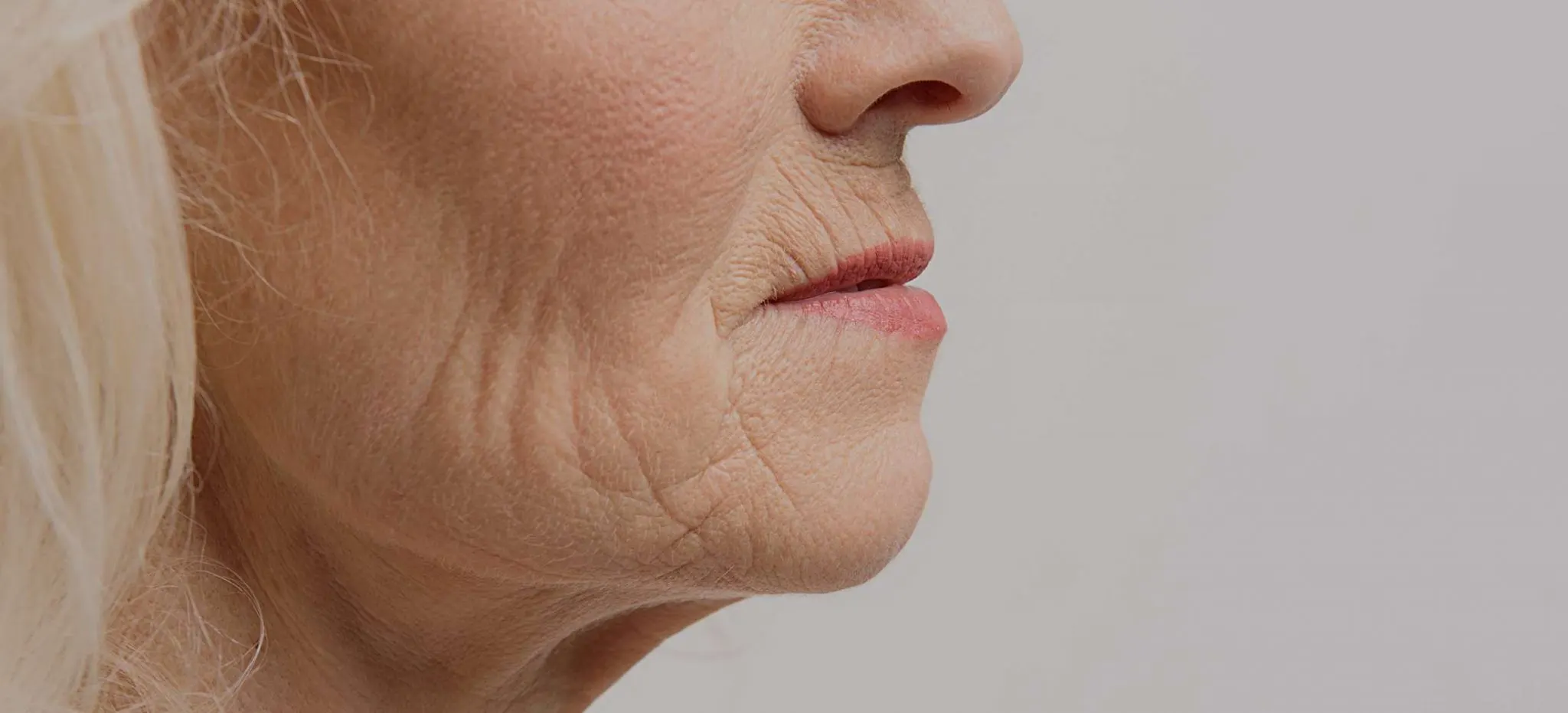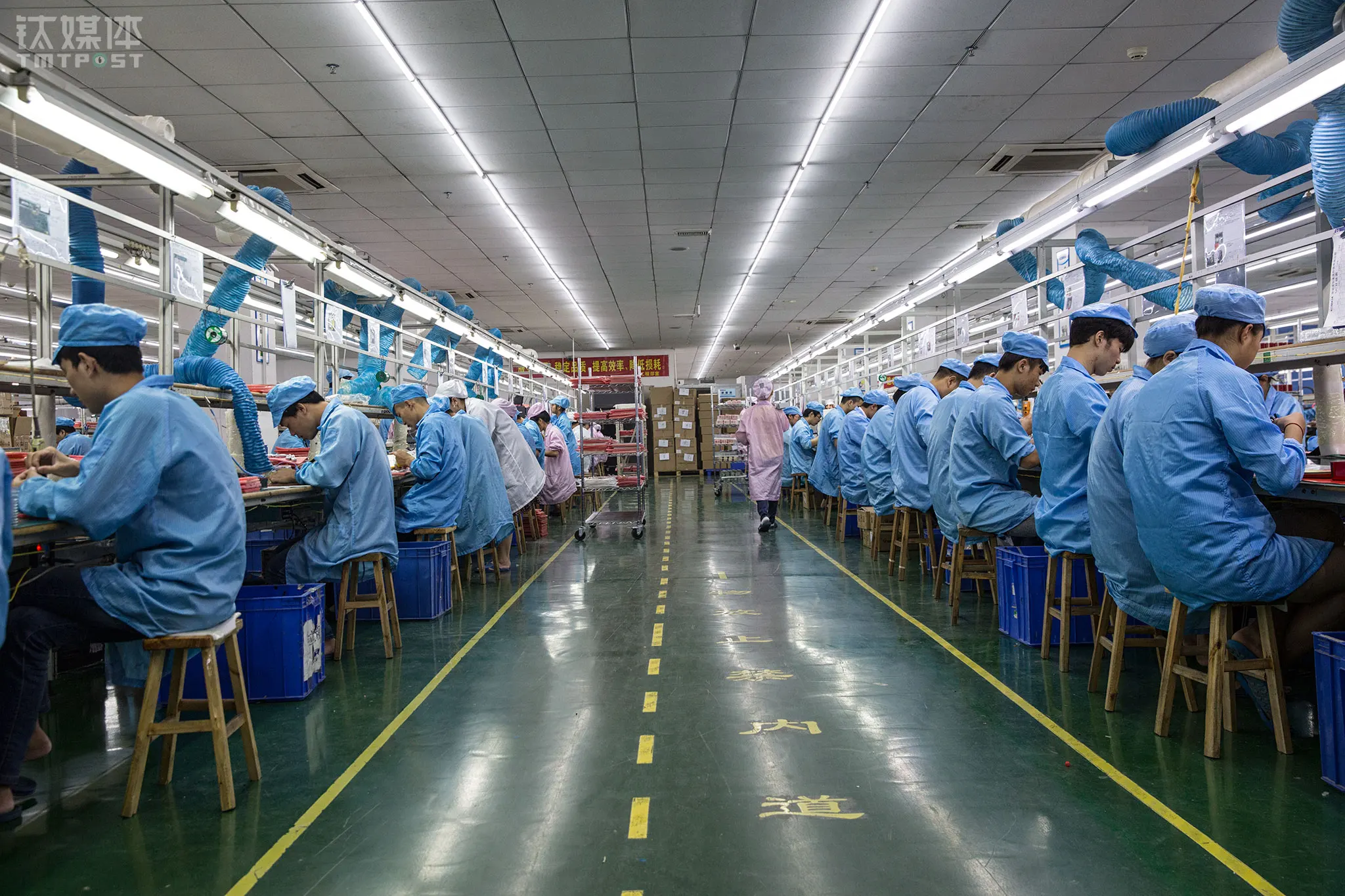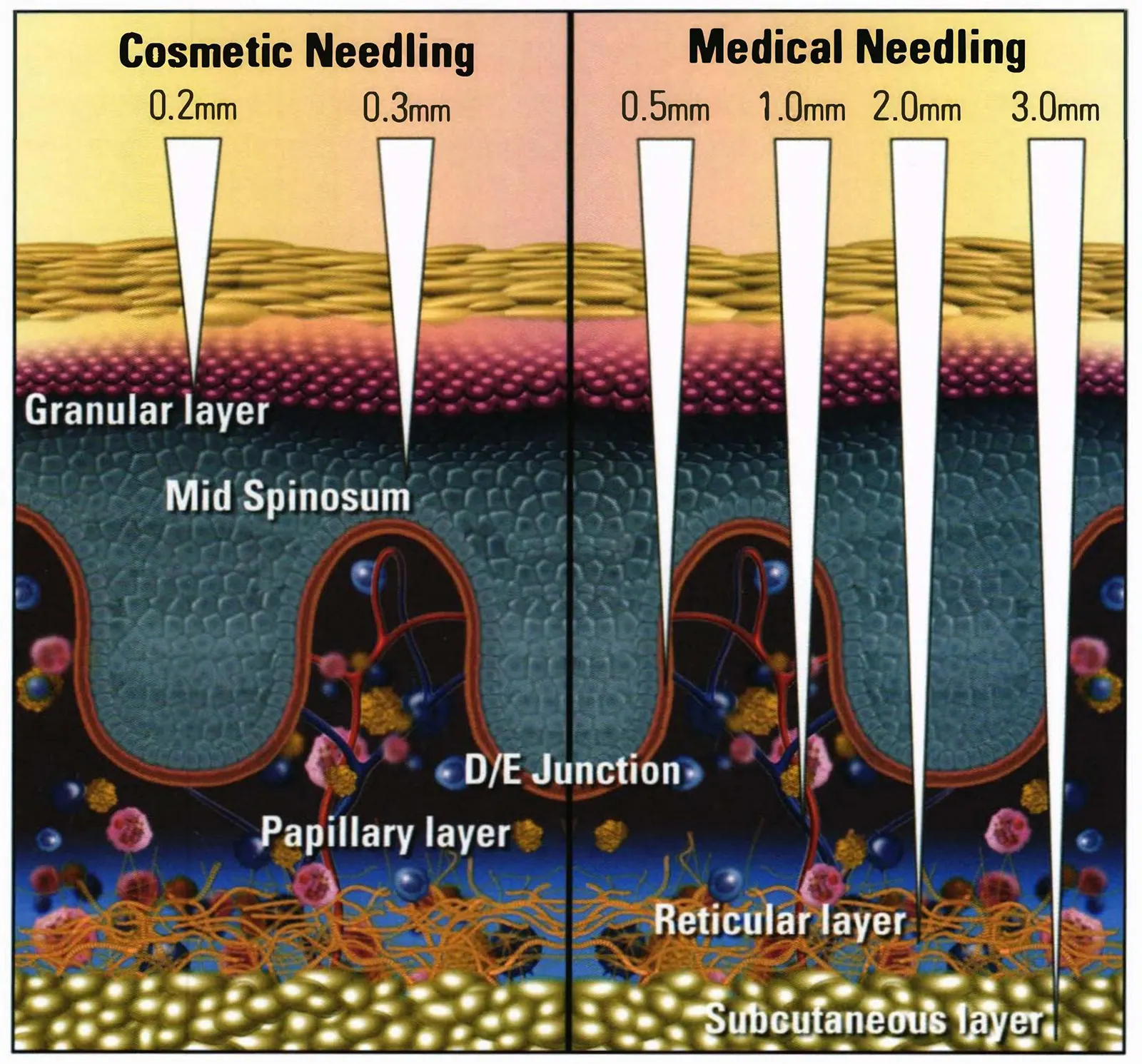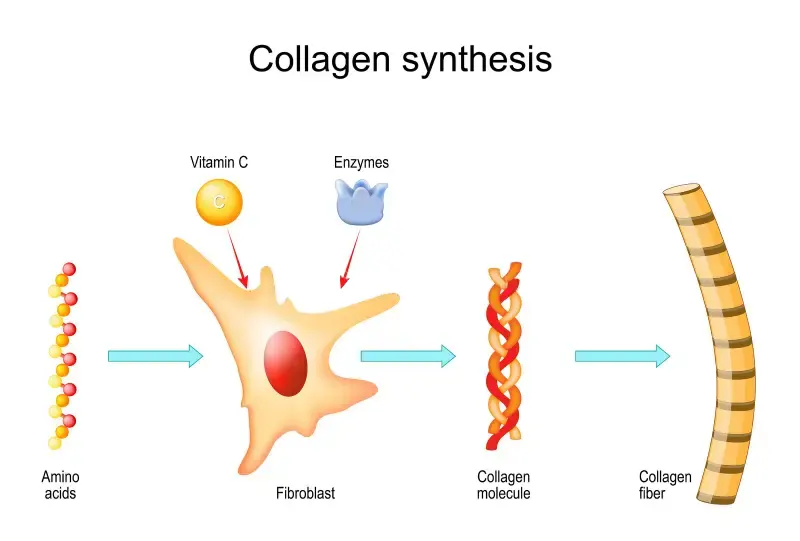3 Key Amino Acids for Collagen Synthesis
There are 3 key amino acids for collagen synthesis: proline, lysine and glycine. They play different roles in forming the triple helix structure and function of collagen:
Glycine
Role:
Glycine is the most abundant amino acid in collagen, accounting for one-third of all amino acids.
Its small molecular structure (with only one hydrogen atom as a side chain) makes it very flexible and suitable for occupying the small space of the triple helix structure of collagen.
Repeating sequences of glycine (such as Gly-X-Y, where X and Y are usually proline or hydroxyproline) are the core of the triple helix structure of collagen.
Function:
- Glycine provides structural compactness, ensuring that the triple helix can form stably and compactly.
- Glycine an important contributor to the stability of collagen, giving it high mechanical strength.
Proline
Role:
Proline accounts for a high proportion in collagen and is an important component of the triple helix structure.
Its ring structure makes it more rigid, which is essential for the construction and maintenance of the triple helix.
During the synthesis process, proline can be converted into hydroxyproline by enzymatic reaction.
Function:
- Maintain triple helix stability: Hydroxyproline further enhances the thermal stability of collagen by forming hydrogen bonds with water molecules.
- Anti-stretching ability: Proline gives collagen fibers a certain rigidity, making them have a higher anti-stretching ability under stress.
Lysine
Role:
Lysine plays a key role in the cross-linking formation of collagen fibers.
During the synthesis process, lysine is converted into hydroxylysine by hydroxylation.
Hydroxylysine can bind to glycosylated molecules (such as glucose and galactose) and cross-link with other lysine or hydroxylysine by enzymatic reactions.
Function:
- Enhance the strength and elasticity of collagen fibers: Lysine and hydroxylysine make collagen fibers stronger and more stable by forming covalent cross-links (catalyzed by lysyl oxidase).
- Participate in glycosylation reactions: Glycosylation modification on hydroxylysine plays an important role in the fiber assembly and function of collagen.
The three work together
Glycine provides the compactness of the collagen triple helix structure and is a basic building block.
Proline and hydroxyproline provide stability and heat resistance to the triple helix, ensuring that collagen fibers maintain structural integrity under different conditions.
Lysine and hydroxylysine enhance the strength and elasticity of collagen fibers through cross-linking, making them more efficient in their function in the body.
The unique functions of these amino acids in collagen synthesis make them important nutrients to support skin health, joint repair and tissue regeneration.
Clinical and nutritional significance
Lack of glycine: may lead to incomplete collagen synthesis and loose structure, affecting the health of skin, joints and connective tissue.
Lack of proline and lysine: can lead to lack of stability and strength of collagen fibers, increasing the risk of skin sagging and tissue fragility.
Sources of amino acids for food supplementation
Glycine: can be obtained from gelatin, animal connective tissue and meat.
Proline: can be obtained from protein-rich foods such as eggs, dairy products and meat.
Lysine: widely found in lean meat, eggs, fish and dairy products.
Sources of amino acids for cosmetics manufacturing
From a cosmetic manufacturing perspective, glycine, proline, and lysine are key amino acids that are often used to support collagen production and skin health. Here is a breakdown of the main sources of these three amino acids:
Sources of Glycine
Animal sources:
Gelatin: extracted from pig skin, cow skin or fish skin, is an important source of glycine.
Collagen extract: collagen hydrolyzate extracted directly from animal tissues (such as bone, cartilage, skin), rich in glycine.
Plant sources:
Soy protein hydrolyzate: obtained by enzymatic or acid hydrolysis of soy protein, rich in glycine and other amino acids.
Wheat protein hydrolyzate: extracted from wheat protein, is also an available plant-based source of glycine.
Synthetic sources:
Industrial chemical synthesis: Glycine can be artificially synthesized through chemical reactions (such as the reaction of chloroacetic acid with ammonia), with low cost and high purity.
Sources of Proline
Animal sources:
Collagen extract: Similar to glycine, proline is abundant in collagen and is mainly extracted from fish skin, cow skin or pig skin.
Whey protein hydrolysate: Whey protein also contains a high proportion of proline and can be used as a raw material.
Plant sources:
Soy protein hydrolysate: Soy protein contains a certain proportion of proline, which can be used in cosmetic formulations after enzymatic hydrolysis.
Algae extract: Freshwater or marine algae such as seaweed and spirulina also contain proline, which is often used in natural and organic cosmetics.
Synthetic sources:
Proline can be produced by microbial fermentation or chemical synthesis methods with high purity and controllability.
Sources of Lysine
Animal sources:
Collagen extract: Collagen in animal tissue contains lysine after hydrolysis, which is its main source.
Meat extract: Protein hydrolysates extracted from animal muscles such as beef and pork are rich in lysine.
Plant sources:
Plant protein hydrolysates: Lysine can be obtained after hydrolysis of wheat, soy and pea proteins.
Algae extract: Freshwater algae such as spirulina and seaweed also contain lysine.
Synthetic sources:
Microbial fermentation: Lysine can be mass-produced by microbial fermentation (such as fermentation with corn syrup as raw material), which is the main source of lysine in the cosmetics industry.
Chemical synthesis: Another way to produce lysine industrially, it is low-cost but often used in non-natural cosmetic formulations.
Application of amino acids from different sources in cosmetics manufacturing
Animal sources: mostly used in high-end skin care products or formulas with repair functions, such as fish collagen extracts, which are rich in glycine and proline.
Plant sources: widely used in natural and organic cosmetics, such as soy protein and algae extracts.
Synthetic sources: mostly used in basic skin care products produced on a large scale, with low cost and stable ingredients.

